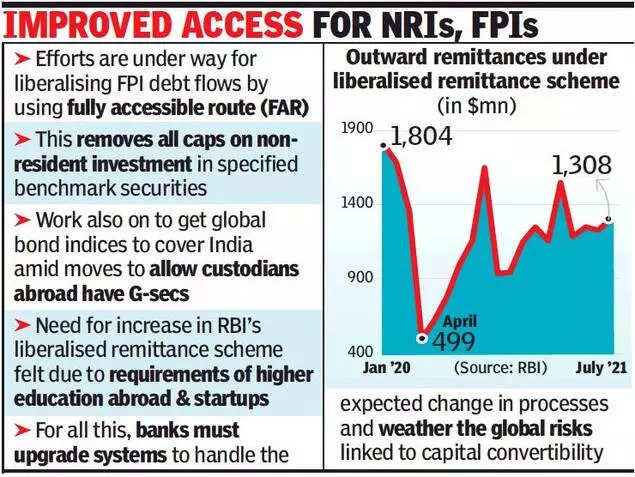The deputy governor’s statement on moving ahead on convertibility comes at a time when the country is seeing huge capital inflows through foreign portfolio investments (FPIs) and foreign direct investments (FDIs), including private equity funding of startups. Statements in support of convertibility are seen as signs of confidence on the external front as, typically, the RBI has eased capital restrictions so that overseas investments can counterbalance inflows.
“There is an effort to liberalise FPI debt flows further with the introduction of the fully accessible route (FAR), which places no limit on non-resident investment in specified benchmark securities. Since over time, virtually all securities will fall under the FAR category, the move is unambiguously towards eventual unfettered access for non-residents into government securities,” said Sankar, speaking at the 5th annual day of the Foreign Exchange Dealers’ Association of India (FEDAI) on Thursday.

Sankar said that debt flows to government securities (G-secs) are likely to increase after limits are raised. “Efforts to get India included under global bond indexes and the complementary move towards placing G-secs under global custodians, once implemented, will encourage debt flows in future,” he said.
For resident Indians, the amount of capital they can send is limited under the LRS. “As the LRS has operated for some time, there may be a need to review it, keeping in mind the changing requirements such as higher education for the youth, the requirement of startups, etc. There might even be a case for reviewing whether the limit can remain uniform or can be linked to some economic variable for individuals,” said Sankar. Indians have been sending an average of $1.5 billion every month until the pandemic for various purposes including education, travel and maintenance of relatives. This dropped to an average $1 billion last year due to the pandemic and has again inched up to $1.2 billion on average in the first quarter.
According to Sankar, foreigners holding substantial debt holdings might make India vulnerable to the risk of sudden reversals. However, this risk is reduced if India is part of global indices. “There is a natural safety mechanism as index investors are unlikely to indulge in sudden reversals. It may need to be considered, from a macroprudential perspective, whether the ‘fully accessible route’ should be linked to index inclusion,” said Sankar.
The deputy governor said that banks should prepare themselves to manage the business process changes and the global risks associated with capital convertibility. He said that the job of the regulator was limited. “The job of a regulator is like the gas regulator in the kitchen — it cannot ensure the quality of the dish, but it can prevent the kitchen from blowing up,” he said.





)

More News
TikTok ban in US: How China may retaliate – Times of India
Infosys narrows revenue gap with Cognizant – Times of India
HUL profit declines 1st time since Covid-hit March 20220 qtr – Times of India